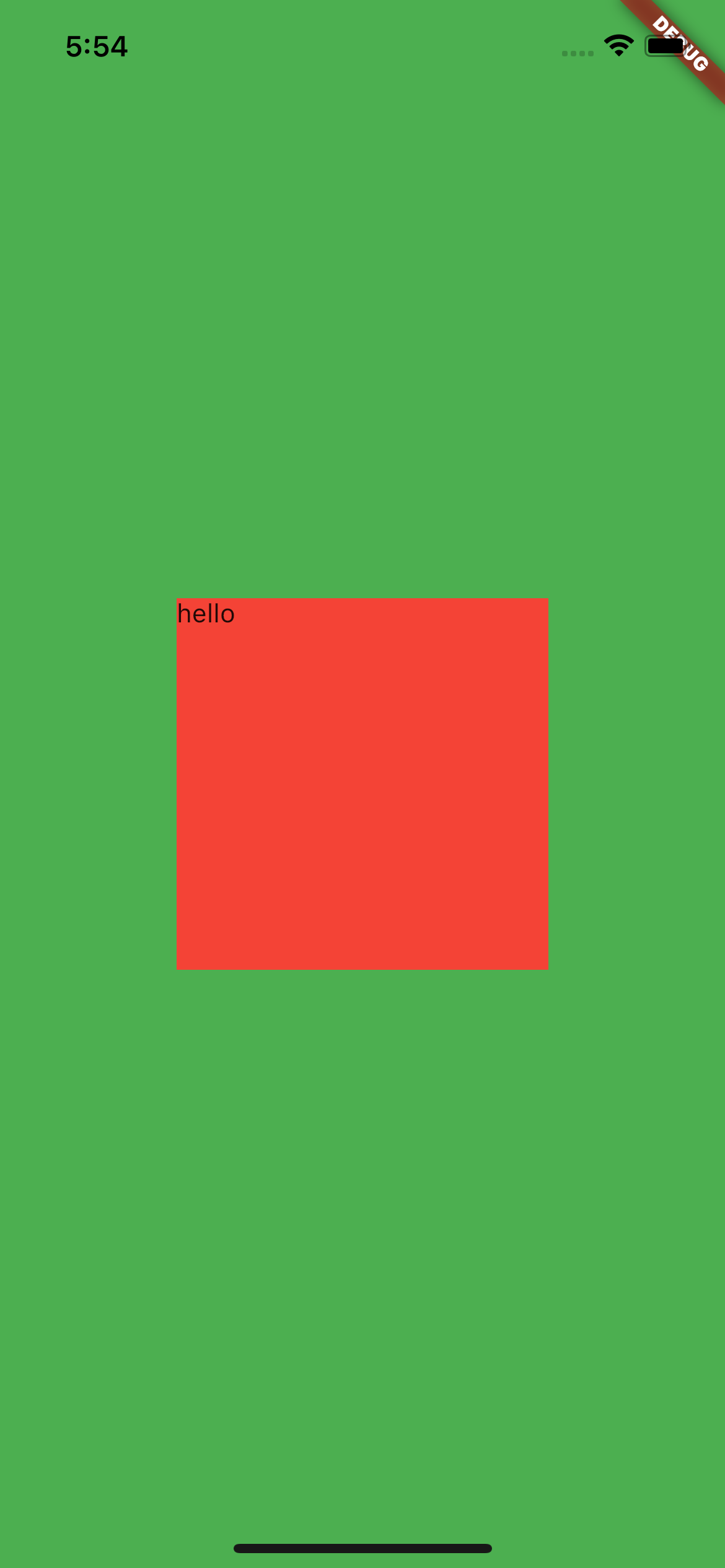flutter 效果实现 —— 构建镂空区域
效果:

代码:
class HomePage extends StatelessWidget {
const HomePage({Key? key}) : super(key: key);
@override
Widget build(BuildContext context) {
return Scaffold(
backgroundColor: Colors.transparent,
body: Container(
color: Colors.red,
child: CustomBox(
200,
200,
child: Text("hello"),
),
),
);
}
}
class CustomBox extends SingleChildRenderObjectWidget {
const CustomBox(this.cutWidth, this.cutHeight, {super.child, super.key});
final double cutWidth;
final double cutHeight;
@override
RenderObject createRenderObject(BuildContext context) {
return _RenderCustomBox(cutWidth: cutWidth, cutHeight: cutHeight);
}
@override
void updateRenderObject(BuildContext context, RenderObject renderObject) {
(renderObject as _RenderCustomBox)
..cutWidth = cutWidth
..cutHeight = cutHeight;
}
}
class _RenderCustomBox extends RenderProxyBoxWithHitTestBehavior {
_RenderCustomBox({required double cutWidth, required double cutHeight})
: _cutWidth = cutWidth,
_cutHeight = cutHeight,
super(behavior: HitTestBehavior.opaque);
double get cutWidth => _cutWidth;
double _cutWidth;
set cutWidth(double value) {
assert(value != null);
if (value == _cutWidth) {
return;
}
_cutWidth = value;
markNeedsPaint();
}
double get cutHeight => _cutHeight;
double _cutHeight;
set cutHeight(double value) {
assert(value != null);
if (value == _cutHeight) {
return;
}
_cutHeight = value;
markNeedsPaint();
}
@override
void performLayout() {
super.performLayout();
//size 为全屏
size = constraints.biggest;
}
@override
void paint(PaintingContext context, Offset offset) {
final inner = Size(_cutWidth, _cutHeight);
final innerOffset = Offset((size.width - _cutWidth) / 2, (size.height - _cutHeight) / 2);
// 通过图层暂存 + 图形裁剪构建镂空区域
// 传递 null 等价于 offset & size,暂存当前整个屏幕,在 restore 后对图形进程合成
context.canvas.saveLayer(null, Paint());
// 遮罩整个屏幕
context.canvas.drawRect(offset & size, Paint()..color = Colors.green);
// 构造镂空区域
// blendMode: 之前绘制的为目标图像,当前绘制的为原图像。
// dstOut: 作用是只展示目标图像,不渲染源图像,源图像仅用作蒙板(忽略颜色,只关注透明度, 透明度越接近于1则下方图层越透明)
// dstIn: 只渲染目标图像与源图像重合的部分,不渲染源图,源图仅用作蒙板
// dstOver: 源图放在目标图下面
// dstATop: 将目标图像覆盖到源图像重合的部分,其余部分渲染源图
// xor: 源图与目标图重合部分变透明,如果只有一方不透明,则显示那一方。
context.canvas.drawRect(
innerOffset & inner,
Paint()
..color = Colors.yellow.withOpacity(1)
..style = PaintingStyle.fill
..blendMode = BlendMode.dstOut);
// restore 时还原整个屏幕,restore 的层级位置与执行 saveLayer 时的层级一致。
context.canvas.restore();
// 注:save 与 saveLayer 的区别:前者用于在 save 与 restore 之间可以对旧画布执行某些操作(缩放、转换、旋转等),而在 restore 之后的画布不受影响。(举例:在 save 后将当前画布进行缩放后画一个更大的图,再 restore 后重新对原画布旋转90度。)
// 后者用于在 saveLayer 之后创建新图层,之前的旧图层不受影响,且在 restore 之后再进行合成(新旧图层共同构建了一个合成图层,且新图层的层级比旧图层要高)。
// 总结:saveLayer 存在图层合成操作,而 save 没有。
// 通过路径填充类型构建镂空区域
// final path = Path()
// ..addRect(innerOffset & inner)
// ..addRect(offset & size)
// //路径填充类型
// ..fillType = PathFillType.evenOdd;
// context.canvas.drawPath(path, Paint()..color = Colors.green);
if (child != null) {
context.paintChild(child!, innerOffset);
}
}
}


